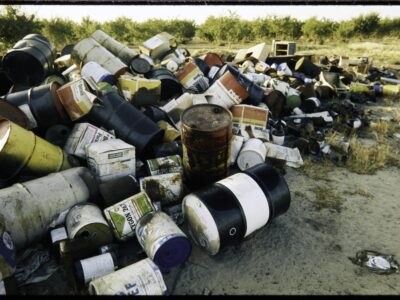EPA proposes fuel economy letter grade labels for cars

 New labels proposed by the federal government would give new cars letter grades reflecting their fuel economy and greenhouse gas emissions. Electric cars and plug-in hybrids are expected to get the highest grades. The rule isn’t final yet; the public can comment and make suggestions on the label design.
New labels proposed by the federal government would give new cars letter grades reflecting their fuel economy and greenhouse gas emissions. Electric cars and plug-in hybrids are expected to get the highest grades. The rule isn’t final yet; the public can comment and make suggestions on the label design.
Most of us are familiar with the fuel economy labels that our federal government requires for all new cars. These labels estimate the miles a car owner can expect to drive per gallon of gasoline, under idealized conditions. While the labels’ information is far from perfect, the information does allow consumers to make more informed choices about auto purchases than they would otherwise be able to make. Earlier this week, EPA and the National Highway Traffic Safety Administration announced their proposal for new fuel economy labels for cars starting in model year 2012.
Autoblog.com has developed projections of how the new labeling system would grade cars currently on the road. For comparison, CNN Money evaluates the current label and how useful the new labels would be for consumers.
The major criticism I’ve heard of the proposed standards, discussed in the CNN Money article, is that the letter grades will skew consumers’ perceptions by making fuel economy more available and salient than all other factors, including safety, reliability, and performance. I haven’t thought this through, but given that the agencies have a specific legislative mandate to make fuel economy information available to consumers through labels, I don’t think that making these labels more evaluative or robust troubles me at all. If Congress wants labels on cars that reflect these other factors, it’s free to require that other labeling, after all.
Reader Comments
3 Replies to “EPA proposes fuel economy letter grade labels for cars”
Comments are closed.







What would be more effective than a letter grade would be a numerical score — with a dollar sign before it. Specifically, the discounted present value of the vehicle’s projected lifecycle fuel consumption. Require that the score be placed above the sticker price, in a larger type font.
The new labels actually do project fuel cost per year and savings or deficit over five years over the “average” vehicle” – not exactly what you suggest, kjinnovation, but a step in that direction.
In any event, I encourage you, and others, to comment on the EPA’s website with proposed designs; the labels are a proposal and the agencies are taking public comment now that might result in changes.
Sean – Thanks for the prodding. FYI, I submitted the following comment, and I also encourage others to do the same.
– Ken Johnson
http://www.epa.gov/fueleconomy/label.htm
Docket ID No. EPA-HQ-OAR-2009-086
Recommendation: Report the discounted present value (in dollars) of the vehicle’s projected LIFECYCLE FUEL CONSUMPTION (including electricity for PHEV’s), instead of the 5-year savings relative to an “average” vehicle.
Reasons:
(1) Fuel savings alone would create fuel-economy incentives OVER TWICE the regulatory incentive of new CAFE standards if consumers fully valued lifecycle fuel savings. [See my publication “Going Beyond CAFE Standards …,” http://ssrn.com/abstract=1624672.%5D Lifecycle fuel savings is the most important performance metric in influencing consumer choice. DO NOT REINFORCE CONSUMERS’ SHORT-SIGHTEDNESS BY REPORTING ONLY SHORT-TERM COSTS AND BENEFITS!
(2) Savings relative to an “average” vehicle is not a useful metric because “average” is ambiguous. Over what category of vehicles is the average taken? (An average over all vehicles is not meaningful for rating vehicles in different utility classes.) Is it a footprint-weighted average? Or a sales average? In any case, I don’t care how a vehicle compares to some hypothetical “average,” because the “average” is not among my choice options. All I care about is how any two particular purchase options that I am considering compare.
Other recommendations: Report assumed fuel price and discount rate in footnotes. Use a realistic fuel price for lifecycle costs, not $2.80/gal. The CAFE rulemaking assumed $3.18/gal between 2010 and 2030. Labels should be periodically revised to reflect updated EIA projections. Also, use a realistic discount rate (e.g., 5%, consistent with the CAFE rulemaking — or a lower value, consistent with current economic conditions). On the website, provide a graph of actual past fuel price trends and assumed future projections (inflation-adjusted). The graph should also show previous years’ EIA projections to give the consumer realistic information on how reliable the fuel price projection is. Provide a simple graphical utility for recalculating the lifecycle fuel cost based on a different fuel price (e.g. AEO high- or low-price scenario) or discount rate (e.g. 3% or 7%).
Bottom line: Make sure the consumer really understands how many gallons of fuel consumption, how much fuel cost, and how many tons of CO2 they are committing to OVER THE VEHICLE’S FULL LIFECYCLE.